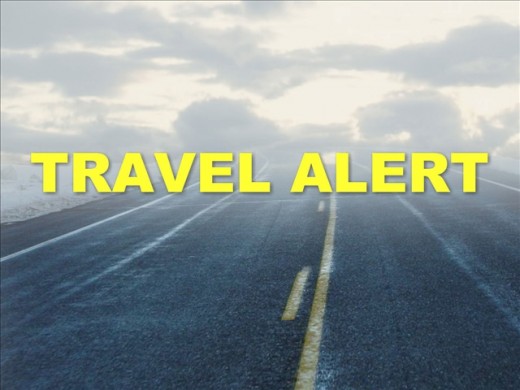For those of us who travel a lot, it’s an ordinary thing to see the flight advisories in any given airport changed from yellow to orange to red. The whole country has been on high alert since 9/11, but there are some travel advisories and warnings that you should keep an eye on. If international travel is a part of your job description, you should remember that not all advisories are created equal.
There are three main types of travel advisories issued by the federal government: travel warnings, travel alerts, and emergency messages. No single federal agency issues travel advisories; they are usually issued by embassies or intelligence offices that deal with local populations directly.
Travel warnings are the most common type of travel advisory, and they probably won’t affect corporate travel. If you’re traveling to an area of the world under travel warning (such as Iran) your boss or the company’s travel advisor has probably already taken the warning into account and included safety information with your itinerary. Travel warnings are usually issued to discuss the rights you may or may not have while visiting a particular area, so that you’re aware of the legal regulations that you’ll encounter. If you’re an adult woman traveling for work alone, these warnings may also let you know that areas of the city or country you’re visiting are unsafe or unwelcoming for solo female travelers. If you’re traveling to an area that you suspect may be under travel warning but you haven’t received notice along with your itinerary, there are a couple places you can check. The Bureau of Consular Affairs updates travel warnings and advisories for all locations, so check these sites for any safety information that may be relevant to your travels. Travel warnings likely won’t deter your business trip, but they will contain information that will be important throughout your trip.
Since 2013 began, the US has issued travel warnings to the following countries:
○ El Salvador
○ Algeria
○ Mali
○ Niger
○ Kenya
○ Libya
Travel alerts are the the middle of the road, and they’re usually issued when a temporary problem or disaster makes traveling to a specific area more dangerous than it would be normally. You won’t find these in long term danger zones (conflict areas of Iraq, for example) but in areas affected by typhoons, hurricanes, or a power struggle in a certain area. If a travel alert has been issued for an area that you’re scheduled to travel to, you can likely reschedule your trip for a later date and then travel safely as planned.
Emergency messages are the advisories that it’s most important to keep up with, because they change so rapidly. Subscribing to services like the Smart Traveler Enrollment Program can help keep you updated on emergency messages that could be issued during your journey to a locale in danger. .The app will also let you know if conditions change while you’re traveling, in case a coup breaks out during your trip or a disaster is impending.
Some of the most serious US travel warnings currently issued include advisories to the following areas:
● Sudan (this includes a travel warning from the US Maritime Administration)
● Libya
● Tunisia
● Lebanon
● Algeria
The travel advisories issued for these areas not only warn against traveling to these countries, they advise any US citizens currently on business or personal trips in the area to leave the country and return to the United States. The US has even reduced official staff presence in Sudan and Tunisia because the security threat is so high. Skype meetings or video conferencing could serve as a valuable replacement for dealing with business partners in countries under high alert.
The Bureau of Consular Affairs offers a complete list of all travel advisories currently issued by the US federal government, with detailed information that can inform your travel decisions.
Image: KfyrTV

